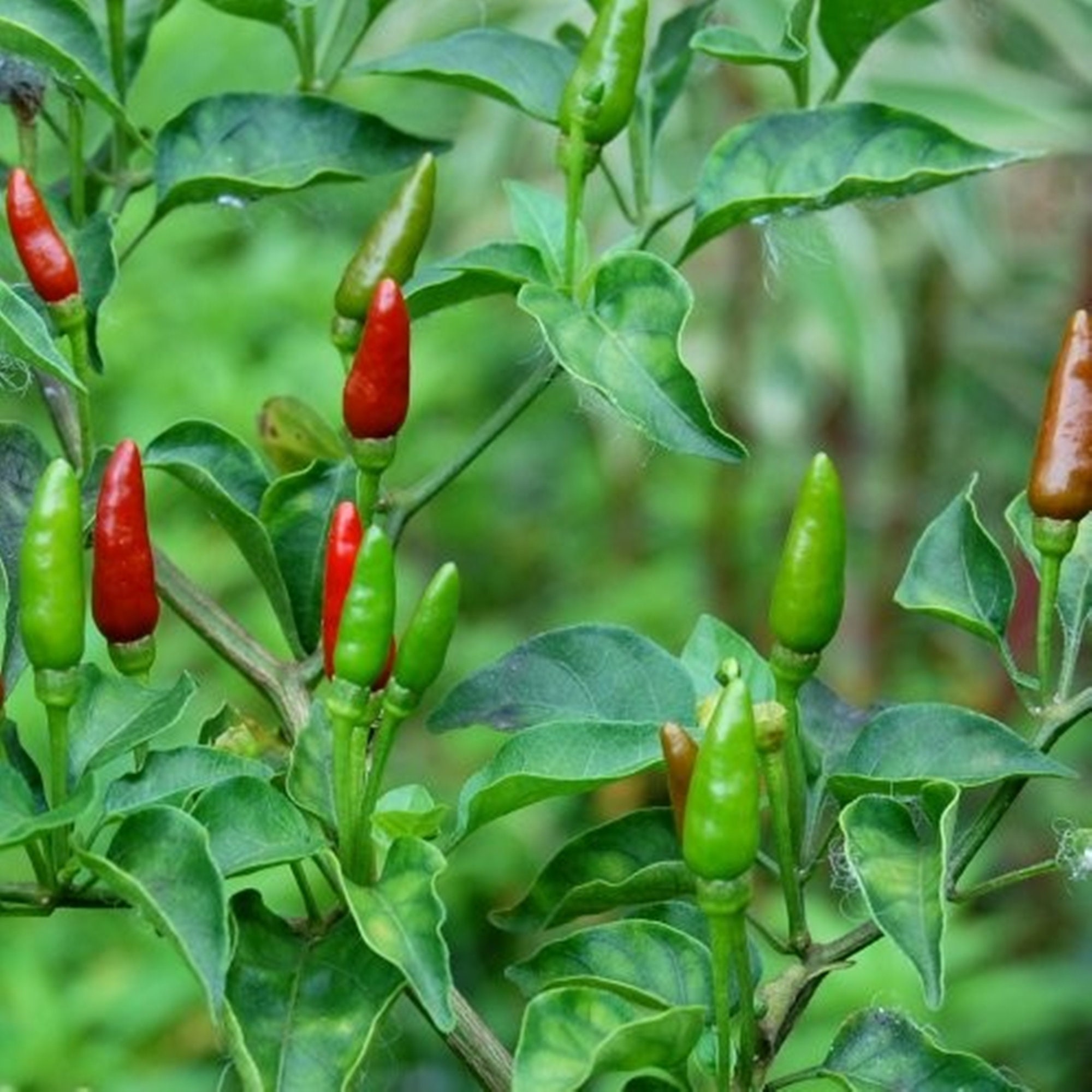Birds eye chilli plant, a captivating member of the Capsicum family, captivates with its fiery essence and versatility. Its botanical uniqueness, ease of cultivation, and culinary and medicinal prowess make it a captivating subject for exploration.
With its diminutive size and vibrant hue, the birds eye chilli plant belies a fiery punch that belies its appearance. Its compact stature and prolific fruiting make it an ideal choice for home gardeners and culinary enthusiasts alike.
Botanical Description: Birds Eye Chilli Plant

The bird’s eye chili plant, scientifically classified as Capsicum frutescens var. glabriusculum, belongs to the Solanaceae family. This perennial shrub is native to South America, specifically the Amazon basin, and is renowned for its fiery fruits.
Morphologically, the bird’s eye chili plant exhibits a compact and bushy growth habit, reaching heights of up to 1.5 meters (4.9 feet). Its stems are slender, branching profusely, and adorned with alternate, simple leaves. The leaves are ovate to lanceolate in shape, with pointed tips and smooth margins. Their dark green color adds to the plant’s ornamental value.
Unique Characteristics
The bird’s eye chili plant possesses several distinctive features that set it apart from other chili pepper varieties:
- Fruit Size and Shape: The plant produces small, round to oval fruits, typically ranging from 0.5 to 1.5 centimeters (0.2 to 0.6 inches) in diameter. These fruits resemble the size and shape of bird’s eyes, hence the plant’s name.
- Fruit Color: Bird’s eye chili fruits undergo a color transformation during ripening, starting from green to yellow and finally to a vibrant red. This color change indicates the increasing capsaicin content, the compound responsible for the fruit’s spiciness.
- Capsaicin Content: The bird’s eye chili plant is known for its exceptionally high capsaicin content, earning it a place among the hottest chili peppers in the world. The Scoville scale, which measures the pungency of chili peppers, rates bird’s eye chilies at a range of 100,000 to 225,000 Scoville heat units (SHU).
- Medicinal Properties: Capsaicin, the active ingredient in bird’s eye chilies, has been recognized for its potential medicinal benefits. It possesses analgesic, anti-inflammatory, and antioxidant properties, making it a valuable ingredient in various topical pain relievers and traditional medicines.
Cultivation and Care

Growing birds eye chilli plants requires careful attention to their specific needs. Here’s a comprehensive guide to cultivate and care for these plants successfully.
Soil Requirements, Birds eye chilli plant
Birds eye chilli plants thrive in well-drained, fertile soil with a pH between 6.0 and 7.0. Sandy loam soil with a high organic content is ideal. To improve drainage, add perlite or vermiculite to the soil mix.
Watering
Water the plants regularly, but avoid overwatering. Allow the soil to dry out slightly between watering sessions. During hot, dry weather, water more frequently. Mulching around the plants helps retain moisture and regulate soil temperature.
Sunlight
Birds eye chilli plants need full sun to produce abundant fruit. Provide at least 6 hours of direct sunlight per day. If grown indoors, use artificial grow lights to supplement natural sunlight.
Fertilization
Fertilize the plants every 2-3 weeks during the growing season. Use a balanced fertilizer with a ratio of 10-10-10 or 15-15-15. Avoid over-fertilizing, as this can burn the roots.
Common Pests and Diseases
Birds eye chilli plants can be susceptible to pests such as aphids, whiteflies, and spider mites. To prevent these pests, keep the plants clean and free of weeds. Use insecticidal soap or neem oil to control infestations. Common diseases include bacterial leaf spot and powdery mildew. Practice good sanitation and use disease-resistant varieties to prevent these issues.
Culinary and Medicinal Uses

Birds eye chillies are highly valued for their culinary and medicinal properties. Their unique flavor profile and potential health benefits make them a popular ingredient in various cuisines and traditional medicines.
Culinary Uses
Birds eye chillies possess a distinct flavor profile characterized by intense heat, fruity notes, and a lingering pungency. They are commonly used in fresh, dried, or ground form to add spice and complexity to dishes.
- Fresh chillies: Used in salads, salsas, curries, and stir-fries, imparting a vibrant color and intense flavor.
- Dried chillies: Often ground into powders or flakes and used as a seasoning in spice blends, rubs, and marinades.
- Preserved chillies: Pickled or fermented chillies are popular in Asian cuisine, adding a tangy and spicy element to dishes.
Medicinal Properties
Birds eye chillies contain a compound called capsaicin, which is responsible for their characteristic heat. Capsaicin has been shown to possess various medicinal properties, including:
- Pain relief: Capsaicin has analgesic effects, reducing pain and inflammation when applied topically.
- Antioxidant activity: Birds eye chillies are rich in antioxidants, which protect cells from damage caused by free radicals.
- Antimicrobial properties: Capsaicin exhibits antimicrobial activity against certain bacteria and fungi.
Additionally, birds eye chillies are a good source of vitamins A, C, and E, which contribute to overall health and well-being.